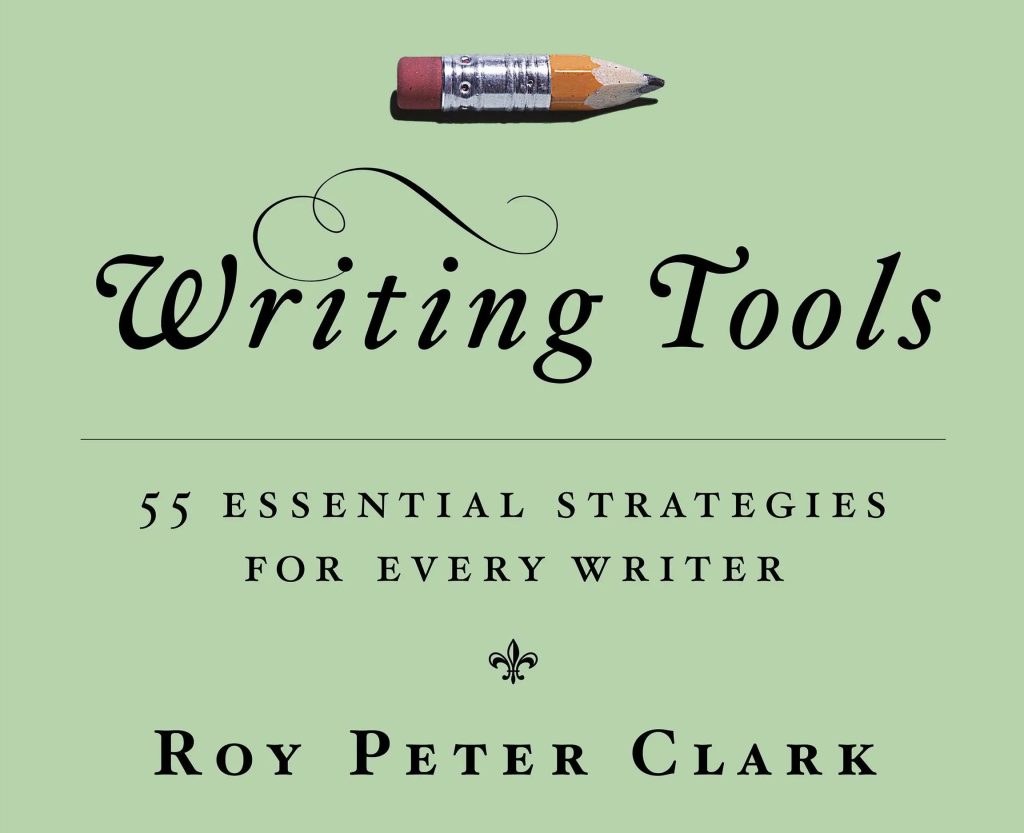
Един от основните авторитети в съвременната западна журналистика Рой Питър Кларк предлага на журналистите и репортерите „да се дистанцират от неутралността“
 Кларк пише своята 20-та книга. Тя ще се казва „Кажи го, както е: Ръководство за ясно и честно писане“. А есето, че „неутралността е добро, но не винаги“, публикувано от Пойнтър, ще се превърне в една от главите на книгата.
Кларк пише своята 20-та книга. Тя ще се казва „Кажи го, както е: Ръководство за ясно и честно писане“. А есето, че „неутралността е добро, но не винаги“, публикувано от Пойнтър, ще се превърне в една от главите на книгата.
Ето някои мисли от това есе, което по-долу може да го намерте на английски език.
„Не използвам думата обективност. Сега тази дума има твърде много конотации. Вместо това има три други: неутралност, безпристрастност и независимост.
Журналистите НЕ трябва да бъдат неутрални, когато става въпрос за ценностите на журналистиката, ценностите и идеите на демокрацията, гражданското участие – особено изборите.“
По-нататък в есето си Рой Питър Кларк описва шест групи, на които съвременната журналистика може да бъде разделена, в зависимост от това колко далеч са медиите (репортерите) от нулевата позиция – позицията на „неутралитет”.
Например, абсолютно неутралните медии се характеризират с „краткост“ на представяне на информация.
За следващата група е важно да декларира своята независимост, но и да могат да публикуват мнения (чрез маркирането им). Тези медии следват правилото на две позиции. Това е най-разпространената група медии, която се е развила през 20-ти век.
Третата група е „замесена, обвързана„. Те се характеризират с твърда проверка на факти (но не по всички теми), разследвания в определени области, които редакторите смятат за важни. Те са неутрални по много въпроси, освен например социалната несправедливост, участието в избори, образованието и т.н.
Четвъртата група е „Застъпничество – адвокатство, защита на позиция“. Те обхващат само онези теми, в които имат интерес. Те са акционисти.
Петата група са „поддръжници (партийци)„. Те работят с информацията, която е необходима за легитимиране на някаква идея.
Шестата група е „пропагандаторите„. Тук всичко е просто: фалшификати, манипулации и дезинформация за постигане на определени от някого цели.
Разбира се, че за да се убедим в прочетеното дотук, не е нужно да ходим далеч, а е достъчно да си спомним за журналистическата дейност на Христо Ботев. Той не е можел да остане безпристрастен в своите издавани в Браила и в Букурещ вестници.
Следва оригиналът на есето на английски език.
In journalism, ‘objective’ is a good word with a noble history. But let’s consider ‘distance from neutrality.’
Just because journalists choose to be neutral about some things does not mean they have to be neutral in all things.
Вy: Roy Peter Clark
Poynter writing teacher Roy Peter Clark is working on his 20th book, scheduled for publication in the spring of 2023. The title is “Tell It Like It Is: A Guide to Clear and Honest Writing.” The publisher is Little, Brown, which has published the last six of his books. This essay is set to become a chapter in the new book.
April 21, 2022
For the purpose of this exploration, I will not rely on the word “objective.” It is a good word with a noble history. But it has taken on so many problematic and confusing connotations that it may have lost all practical meaning. I’ll replace it with more useful terms.
Here are five: neutral, disinterested, nonpartisan, impartial and independent. If someone painted a word cloud on the side of an old journalism school, I can imagine these words being included.
It is in that constellation of words that many but not all journalists and public writers find their duty. The current moment is calling those words — and the standards and practices associated with them — into question. If I am a journalist, or work in any news organization, especially if I am a reporter representing the place, may I march in protest or in support of something, may I donate money to a presidential candidate, may I slap a bumper sticker on my Mustang?
Social media have, of course, magnified the problem, as has everything that is happening in the moment, from pandemic debates, to recession effects, to civil unrest and fire in the streets, not to mention a presidential campaign in which one candidate attacks the news media and who lies about the results of the election.
May I write a tweet to express my own preferences and not those of my news organization? Does my role matter: reporter, copy editor, ad manager? If I wear a mask while reporting, am I making a political statement? When it comes to issues about “where I stand” as a public writer, I have reached one powerful conclusion: Just because journalists choose to be neutral about some things does not mean they have to be neutral in all things. (There will be fervent debates about what those things are, and I hope this essay helps us have them.)
Journalists need not be neutral about the value of journalism at its best. About the ideals of democracy at their best. About civic participation, especially things such as voting. In my shop, you could put a sign in your yard saying “Register to Vote.” But not “Vote for So-and-So.” An American flag, yes. A Confederate flag, no. A pride flag? Hey, my oldest daughter describes herself as “queer.” You decide.
In my shop, you could be openly supportive in many ways for human rights and racial justice. But if you are covering the criminal justice beat, you need to write with a level of neutrality about whether we should “defund the police.” If you are doing your job, you need to help us understand the various meanings of that phrase.
There are too many variables to count. What kind of organization do you work for? One that aligns itself with a particular ideology? Or one that stands closer to neutrality as a reporting ideal? And within that organization, what is the role of the particular journalist? What space does he or she occupy? What genre dominates? Beat reporters, investigators, editorial writers, columnists — all will recognize the freedoms and restrictions that influence their work.
That is why each tends to write in a particular voice that represents a discipline within journalism and public writing.
As I think this through as a coach for writers and editors, I find myself asking one particular question again and again: “As you write this, what is your distance from neutrality?” And another: “Where do you want that distance to be?” And another: “How will you create the voice that marks that distance?”
Measuring stick
To help individuals and organizations to measure their distance from neutrality, I am wondering if it’s possible to create a tool.
You can call it an algorithm, a spectrum, a model, or just a measuring stick. It extends from left to right, from 0 to 5. The higher the number, the farther the distance from neutrality. I anticipate the criticism that this measurement is crude and its findings inexact. It’s certainly tentative. My hope is that stakeholders will argue with it, revise it, adapt it to their own views of public writing and democracy. By all means, create something better.
I am pretty sure about this: No news organization, publication, or website that I know of fits easily into any of the following categories. You may disagree.
Before I proceed, I would like to differentiate my measuring stick from another scale with a different purpose. There have been reasonable efforts to mark publications that lean to the left or lean to the right of neutrality on the ideological scale. On such a bias scale, the conservative magazine National Review would lean to the right, and, say, Mother Jones would lean to the left. In my scale, they would be side by side, exactly the same distance from neutrality.
Here’s my scale:
Zero: Objective
This form of public writing embraces objectivity, at least as an ideal. In some of its current uses, it embodies an unachievable goal (the blank slate; purity from the effects of bias and subjectivity), it is listed here as “zero” rather than “one.” It falls outside the boundary of neutrality. To borrow a phrase from New York University journalism professor Jay Rosen, it now represents a “view from nowhere.” Many who embrace it seem oblivious to how a self-imposed insulation from political expression is in itself an ideological viewpoint.
It is characterized by:
Stenographic reporting
Overattribution
Fairness defined as “two sides”
False equivalence
Context that is thin or nonexistent
No investigations
No editorial positions
No fact-checking of statements by experts
No interest in diversity
One: Neutral
This form of journalism was the norm through many decades of the 20th century and is practiced to some degree in every mainstream newsroom, but has recently come under pressure.
It is characterized by:
No partisan attachment
No special interest
Declarations of independence
Few strong editorial opinions
Labeling of opinion
Balance in opinion pieces
Some fact-checking, but not systematic
Corrections policy
Strict standards against political participation by editorial workers
Yellow or red lights on what can be said on social media
Occasional declarations of “non-voting” as a sign of civic celibacy
Goal: You can’t tell from coverage where the reporter or organization stands
Tries to avoid “loaded” language in reports
Some interest in diversity, with expectations that everyone, in spite of differences, would operate with the same news judgment
Two: Engaged
This form of journalism finds paths to public service that do not always require neutrality as a value. What is sometimes thought of as antagonistic to neutral journalism is here reimagined as a positive, such as a belief in the value of diverse points of view on the same experience. It is the direction where many news organizations are leaning, but it lacks a name.
It is characterized by:
Neutral reporting on many issues
Heavy fact-checking, especially on the powerful
Investigations that stand for certain values
Editorial positions with labels designed to make opinion transparent
Neutrality on some issues, but not every issue (such as protection of children, social justice, voter participation, quality education, getting poison out of the water)
No false equivalencies; evidence is weighed and presented proportionally
May reflect values of region or class or culture
Expresses its distance — sometimes unintentionally — by story selection
Makes distinctions on who can offer takes on social media
Willing in coverage to use language that characterizes a position: “racism” or “lying.”
Growing interest in diversity, hoping that diverse perspectives create a more complex and fuller expression of the truth
Three: Advocacy
“Advocacy” is the word we were left with when we lost any positive connotation to the word “propaganda.” The American Heritage Dictionary defines “advocacy journalism” as “Journalism in which the writer or the publication expresses a subjective view or promotes a certain cause.”
It is characterized by:
Story selection in support of a particular cause and interest
A narrower — but deeper — focus on stories of particular interest
Transparency about its mission and purpose
Promoting actions — including the raising of money — to support a cause
Attention to alternative viewpoints, but often to debate them
Coverage of groups and topics ignored or under-covered by mainstream organizations
Complex definitions of diversity to match groups and causes being promoted
Fact-checking, targeted to oppositional groups
Accuracy a value, supported by corrections
To paraphrase Aldous Huxley, a good advocate only promotes efforts that are in “rational self-interest” of the public at large.
Four: Partisan
A partisan works at a farther distance from neutrality than an advocate. As in all these categories, there can be a crossing-over. The American Heritage Dictionary defines “partisan” as “a fervent, sometimes militant supporter of a party, cause, faction, person, or idea.” While the partisan writer can act — unlike the propagandist — with reason and responsibility, those qualities can be distorted by passionate adherence to the cause.
It is characterized by:
Stories, information, data, visual imagery used only in support of the cause
Personal attacks on opponents
Little attention to fact-checking, except against the opposition
Distorted characterizations of those on the other side (as in political ads)
Undermining of evidence — including science — that contradicts your side
Repetition of slogans and talking points
Loading language to bolster your cause while denigrating the other
Demagogic critiques of elites
Balance defined only as us vs. them
Obvious, but at times unstated, attachment to a political party, church, labor union, or business interest
Some reporting and verification, but more emphasis on assertion, often without evidence
Embrace only forms of diversity that support your position
Encouraged use of social media in support of cause
Five: Propaganda
The meaning of this term turned in the mid-20th century, taking on a more negative connotation after the effects of Nazi propaganda were discovered. In this context, the distance from neutrality is as far as it can be. Fact-checking has no relevance here. Nothing expressed here can be justified.
This is characterized by:
Disinformation and misinformation
Outright lies and fabrications
Exaltation of heroes
Demonizing of enemies
Scapegoating of minorities
Disregard for facts and science
Hate speech, verging on the criminal
Promotion of conspiracy theories
Reckless adherence to a demagogue, destructive cause, or profit motive
Dependence on repeated slogans
Appeals to baser emotions
Disguised as more responsible forms of communication
Questions for discussion
Can an individual place himself or herself along this spectrum?
Can an individual practice a variety of these at different strategic moments, being, for example an occasional neutral observer and an occasional advocate?
What if we were to think of these borders as permeable rather than rigid? Would that help us?
Could an organization place itself along this spectrum?
Could we examine the practices of particular organizations and be able to place them in a category? For example, where might we put USA Today, The New York Times, Fox News, NPR, or The Wall Street Journal?
Could these categories influence the ways in which organizations develop and publish their standards and practices?
Could an individual look at these categories and identify the kind of place he or she would like to work?
Where do powerful social networks stand on this landscape? If they publish ALL forms of these stories, does that make them “neutral?” Are they a platform or a publisher?
How do practices of craft create the effects needed to fulfill one or more of these categories?
Is the term “engaged” a useful one to describe the territory between neutrality and advocacy? Is there a better one?
In the midst of a pandemic, all media leaders are trying to work this out, to find the appropriate distance from neutrality that becomes a launching pad for the fulfillment of their mission. A case in point was the announcement in September 2021 that Julie Pace was to be named the executive editor of The Associated Press, one of the most important jobs in journalism.
Here’s what she had to say to The New York Times: “I understand that sometimes there is an outdated impression of The A.P. or a feeling like we’re just a basic wire service putting out choppy sentences. If that is your impression of The A.P., then you haven’t been paying attention to The A.P. We produce just incredibly high-level, sophisticated reports across all formats every day.”
But what about the AP’s distance from neutrality? “Being a fact-based news organization does not mean that everybody on every side of an issue gets equal hearing, gets equal voice. In certain cases, the facts are just really clear, and we want to make sure that we are amplifying the facts and not muddying the facts. So Covid vaccines are safe. Climate change is real. There was no widespread fraud in the U.S. election. Those are not political positions; those are fact-based positions.”
In other words, while the AP will remain neutral on many topics and issues, they will follow the evidence in support of fact-based conclusions. Neutral on many things does not mean neutral on every thing.
.






